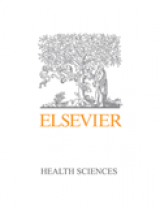Low Vision is organised for quick and easy reference with sections on definitions of the condition and its causes, magnification and other strategies for improving performance, and clinical procedures used in the assessment of vision and prescribing of aids.
The theoretical background to aids and strategies employed is given in detail but there is also abundant practical advice and an indication of the way in which the optometrist's role is integrated with that of other professionals dealing with low-vision patients.
It will be of interest to dispensing opticians, orthoptists and rehabilitation workers who also come into contact with this patient group.
Key Features
Details the theoretical background to aids used and strategies employed
Contains a wealth of practical advice
Explains how the optometrists works with other health care professionals to provide complete care
Author Information
By Christine Dickinson, BSc, PhD, MBCO, Senior Lecturer, Department of Optometry and Vision Sciences, University of Manchester, UK
What is low vision?; Incidence and causes; Measuring visual performance; The multi disciplinary team in low vision care; Magnification; Increasing object size; Decreasing viewing distance; Real image magnification; Telescopic magnification; Non optical aids; Illumination and lighting; Aids for peripheral field loss; Special techniques; Sensory substitution; Environmental modification and building design; The initial assessment; The examination routine; Prescribing magnification; Training patients in the use of magnifiers; Are low vision aids successful?; The place of low vision in optometric practice
... Dr Dickinson s book is highly recommended a place on students bookshelves. Its UK focus and broad coverage recommend it to practices also."Spectrum Magazine, Issue 59,, February 1999
in a readable style, the book reflects both the patient s and the practitioner s perspectives. [...] The combination of all of this information in one volume makes it essential reading. All students and practitioners, whether already involved in low vision practice or not, will gain from this text. It is worth every penny."The Optician, March 1999
impressive overview of this difficult field." --Irish Journal of Medical Science
is one of the larger texts on this important subject and stands out splendidly among a large number of recent publications. The author draws on a very wide literature, giving references at the end of each of the twenty chapters. Production is good, with many clar figures and photographs,. Some of the charts shown are capable of frequent use. A useful feature is the discussion of actual cases and throughout there is an effort to present practical issues and remedies. Undoubtedly many deeply interested in visual rehabilitation in a whole variety of professions will benefit from this text and manufacturers and suppliers of all sorts of devices should value it for reference."Optical World
are relatively few modern texts available on the subject of low vision, particularly originating from the United Kingdom. This book written by an international authority on the subject, is a welcome addition.
the text has been organised to cover a large range of relevant subjects. These range from complex and philosophical debates such as attempting to answer the questions what is low vision? and are low vision aids successful? to more tangible topics, for example, calculating magnification in clinical practice.
The concept of a multi disciplinary approach is absolutely essential in visual rehabilitation and this is fully described.
Overall, this is an excellent textbook. It is comprehensive, carefully laid out and well illustrated.
This text should be essential reading for all concerned in this area, both at postgraduate and undergraduate levels." M P Rubinstein, PhD FCOptom FAAO,Department of Ophthalmology, University Hospital




